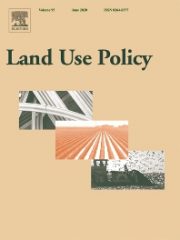Environmentally induced displacement is just now being taken seriously on the world stage; however, as early as 1990 the Intergovernmental Panel on Climate Change (IPCC) has recognized that climate change’s greatest impact could be on human migration. Although climate refugees are now being acknowledged, the International Convention of Refugees only protects individual political refugees fleeing as a result of state-led persecution and excludes those displaced as a result of climate change. Furthermore, climate induced migration is conceptually difficult to define as it exacerbates other displacement pressures, is longer term in nature, and, in certain cases, does not allow migrants the ability to return home in due time, which is an essential assumption in most refugee cases.
It has been clear for a long time that these people exist; however, it is important to understand that the term ‘climate refugee’ inherently showcases the problematic narrative surrounding them. ‘Climate refugee’ conjures an image of people fleeing from cataclysmic disasters in which they are powerless to resist, but the reality is that climate is generally only one factor that contributes to the cause of migration. By positioning climate as the main driver of migration, it shifts the blame away from the human actors who contribute the most to climate change. Throughout this topic we will continue to use the term climate refugee as there is no widely accepted alternative term, though it is important to keep in mind that this term is not nearly as descriptive or useful as it needs to be in order for the international community to properly acknowledge and protect them.
As outlined in the Overview section, the migratory pressure created by climate change generally does not stand alone as a sole factor of migration. One systematic review of articles surrounding the contributing factors to migration suggests the types of stressors number in the hundreds. The same review identifies 75% percent of those stressors as social, while the only 25% being biophysical. In short, the biophysical factors would encapsulate climatic pressures such as droughts, floods, desertification, and other climate driven disasters.
In fact, climate change is not even identified as the most pressing factor affecting those already vulnerable to migratory pressure. Rather, it exacerbates social stressors, increasing the risk and vulnerability that nations and certain populations already withstand. Stressors like poverty, lack of basic human rights, violent conflict, and insufficient infrastructure are just a few of potential stressors that influence the impact of climate change on migration.
The plight of a climate change refugee is undoubtedly a complex one. Currently the solutions are not straightforward, however many experts demand that it doesn’t dissuade policy makers and nations from making attempts since the severity of climate change is only going to worsen the pressures that instigate migration.

Environmentally Induced Displacement and Forced Migration
Pablo Bose and Elizabeth Lunstrum
2014
This paper outlines the difficulties in conceptualizing environmentally induced displacement. Namely definitions that are to broad inflate numbers and potentially lead to ineffective solutions while narrow definitions expose vulnerable cases. Furthermore defining an individual’s right to refugee status on the basis of “voluntariness” is problematic as distinctions between the causal factors inducing displacement are often linked.

Impediments to inland resettlement under conditions of accelerated sea level rise
Charles Geisler and Ben Currens
2017
Worst case estimates project that 1.4 billion people who will inhabit low-elevation coastal zones by 2060 will all eventually become climate migrants as a result of rising global sea levels. This paper outlines major physical and political barriers to interior entry posed to coastal migrants, as well as the projected problems regarding land use. Namely mitigating the permafrost carbon bomb, feeding and providing living space for an increased population. It suggests that changes in the global economy, energy sources, combined with inland adaptation are essential. It then compares and contrasts examples of inland adaptation strategies in China and Florida.

Climate Change, multiple stressors and human vulnerability : as systematic review.
Aleksi Räsänen, Juhola Sirkku, Anja Nygren, Mira Käkönen, Maarit Kallio, Adrián Monge Monge, and Karkku Kanninen
2016
This paper finds substantial variation in how multiple stressor analysis is conceptualized within climate change literature. It finds that the majority of cases do not list climate change as the most evident stressor rather it exacerbates existing stressors. More specifically, contextually specific stressors dominated discussions of vulnerability.

Give Me Shelter from the Storm : Framing the Climate Refugee Crisis in the Context of Neoliberal Capitalism.
Daniel Faber and Christina Schlegel
2017
This paper outlines the mechanisms of neoliberal capitalism in framing, perpetuating, and responding to climate change induced displacement. Climate related stress is framed as natural and the subsequent refugees become framed either as a national security threat, which undermines international cooperation, or as individuals with agency, ignoring structural injustice. Neoliberal capitalism magnifies the degradation of ecosystems and the susceptibility of vulnerable individuals, while using climate change as a means of social control, servicing global capital and the national security state.

Gone with the Wind : International Migration
Dennis Wesselbaum and Amelia Aburn
2019
This paper conducts a long term joint analysis of the driving forces of migration. It finds that climate variables are key drivers of migration and rising temperatures increase migration more than previously anticipated.






